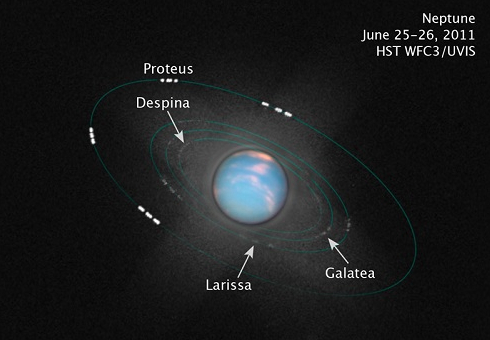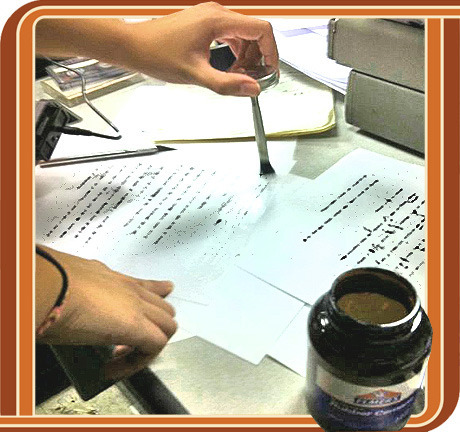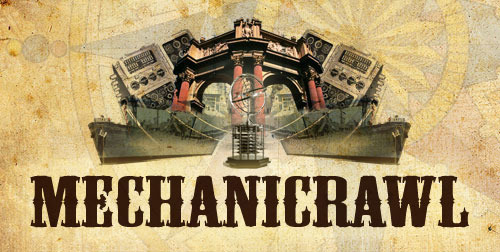Stewart Brand's Blog, page 98
August 17, 2011
Lessons From a Trip Back in Time
The rapid rate of technological change is a common topic of discussion these days, but only occasionally does someone actually take the time to examine – let alone utilize – the technologies that we so readily leave behind.
A great example of just such an undertaking is a project called All On Paper recently carried out by student journalists at Florida Atlantic University. Under the direction of Michael Koretzky, president of the South Florida Pro Chapter of the Society for Professional Journalists, the staff at the student newspaper University Press produced an entire issue using decades-old newsroom methods. For a week, typewriters, film photography, x-acto knives and rubber cement took the place of Word, Photoshop and InDesign.
Koretzky shared some of the challenges and lessons from the experience on his blog, journoterrorist. As he and other professionals taught the students how to use old technology, they realized that even they had to occasionally reference the user's manual.
While archaeologists try to recreate what life was like 10,000 years ago, and historians try to recreate what life was like 1,000 years ago, journalists can't even recreate how they published a newspaper 20 years ago. No one documented the details or saved the old equipment. (I had to buy some of it from creepy old men through Craigslist.)
Journalists may write history's first draft, but when it comes to covering their own history, they don't even take notes.
Journalists, of course, aren't the only ones who have neglected their abandoned methodologies. Neither, however, are they the only ones who have attempted to get back to basics. A previous post on this blog featured an artist who, in fact, specializes in such undertakings, and Long Now executive director Alexander Rose maintains a list of projects that record humanity and technology in ways that could help restart civilization in the event of some sort of collapse.
Koretzky ends his description of All On Paper with a quote from one of the participants. It is a statement of appreciation, and one that highlights a potential benefit of placing our current technologies in their historical context.
Technology hasn't made us lazier, but it has made it possible to be lazier while still producing the same amount of quality work. Now that I've realized this, I know I'll definitely be working faster to produce more quality news. And unlike the ancient civilizations of the 20th century, I've got the technology to do it.







August 16, 2011
Cure for the Digital Dark Age?
*An old VisiCalc ad from the early 80′s.
The Digital Dark Age beacon has been flashing lately with some renewed frequency. It seems that articles on the pitfalls and challenges of preserving our digital "stuff" are starting to find their way back into the mainstream media. Most recent and notable of these is Kari Kraus' op-ed piece in the New York Times, "When Data Disappears." The most salient thing that Kraus points to in this piece is the formation of specialist communities and their role in the preservation of video games.
When I first met Kevin Kelly, he told me of his notion that no technology will ever become obsolete because there will always be someone or some enthusiast community that will put energy toward the preservation of even the most obscure thing. He famously told Robert Krulwich of NPR that, "there is no species of technology that has ever gone globally extinct on this planet."
What he is saying is that there will always be some force of human compulsion or need that emerges to buoy the inventions of our race. This is important. It is this notion of emergence that will help save us from our dreaded digital dark age. What I find myself doing now is trying to envision the existence of Visicalc enthusiast clubs or a group for any of the tens of thousands of digital file formats that have surfaced over the years. I can almost see it. It doesn't seem totally infeasible to me, but part of me worries that some of these technologies just aren't sexy enough to be embraced in the same way that old video games are. I wonder, too, about the scalability of Kelly's idea. As the production of new technology gets faster, will there be enough human interest to sustain the preservation of ALL of it?
Time will tell and I am certainly betting on the hope that there will.







August 12, 2011
Urban Evolution
Cities are often hotbeds of creativity and innovation, where the pace of life is faster and the diversity of people is greater. But humans aren't the only things living in our cities – recent research by evolutionary biologists indicates that the processes of evolution and ecological change can also speed up in urban environments. In a New York Times article, science writer Carl Zimmer shares a glimpse of research conducted in New York City on organisms ranging from mice and fish to ants and bacteria.
Evolution is one of life's constants. New species emerge; old ones become extinct. Environmental changes have often steered evolution in new directions. And modern cities like New York have brought particularly swift changes to the environment. European settlers cut down most of New York's original forest; towns grew and then merged into a sprawling metropolitan region. The chemical environment changed as well, as factories dumped chemical pollution into the water and soil.
An increasing (though still small) number of biologists are focusing their attention on cities, which seem to be excellent laboratories of evolution. In his presentation "Viral Time" at Long Now's SALT series, Zimmer discussed the remarkable pace of evolution in viruses and bacteria, which despite their size have the potential to cause profound and widespread change. And as city-dwellers are often reminded by signs beseeching them to wash their hands, bacteria play a significant role in any urban landscape. Many of the 1,000 gene mutations that researchers have identified in New York City's native white-footed mice are associated with combating bacteria.
Dr. Munshi-South and his colleagues have been analyzing the DNA of the mice. He's been surprised to find that the populations of mice in each park are genetically distinct from the mice in others. "The amount of differences you see among populations of mice in the same borough is similar to what you'd see across the whole southeastern United States," he said.
Urbanization does not simply produce pavement on top of nature. It produces a dynamic mixture of anthropogenic and natural elements that evolves quickly and that can lead to both extinction and adaptation. Given the likelihood of rapidly increasing urbanization throughout the world, these research projects could offer important models for the future as well as hopeful stories of resilience.







Long Now Media Update

WATCH
Geoffrey B. West's "Why Cities Keep on Growing, Corporations Always Die, and Life Gets Faster"
There is new media available from our monthly series, the Seminars About Long-term Thinking. Stewart Brand's summaries and audio downloads or podcasts of the talks are free to the public; Long Now members can view HD video of the Seminars and comment on them.







August 10, 2011
Almost everything is getting better
The Long News: stories that might still matter fifty, or a hundred, or ten thousand years from now.

Last week The Millennium Project released its 02011 State Of The Future report, looking at trends for the past twenty years and projecting ahead for the next decade. (Not the 10,000 year future, but still of interest.) You can read an executive summary of the report here.
While the report finds many things to worry about – global warming, terrorism, corruption – overall the trends are surprisingly hopeful, as shown in their chart called "Where we are winning":








August 9, 2011
Mechanicrawl Ticket Info
The Long Now Foundation presents
Mechanicrawl
explore the mechanical marvels along San Francisco's North Shore!
TICKETS
See giant running steam engines, turn-of-the-century automata, mechanical computers, a wave organ, an 8 foot high mechanical planetarium, vintage steam boats and more…
Saturday September 24, 02011 from 10am to 5pm you can start your crawl at any participating location, see the website for more info
Long Now Members get 2 free tickets, join today! General Tickets $15
Members of these participating organizations also get 2 free tickets, Exploratorium, SF Maritime Park Association & the SS Jeremiah O'Brien
About Mechanicrawl:
Spend a delightful day exploring the mechanical marvels along San Francisco's North Shore. You'll be able to map your own route for the event and spend as much time at each location as you'd like. We encourage you to walk, bicycle or use public transport for Mechanicrawl; maps, featured tours and demonstrations and additional info will be listed on the website.
The idea for the Mechanicrawl event grew out of an appreciation of the mechanical wonders of San Francisco, many of which are neighbors along the touristed north edge of the city. Even though the Bay Area has a passionate culture of making and appreciating these types of mechanical achievements, their locations have kept them from being visited by many residents. Our goal for Mechanicrawl is to put together a special event where Bay Area residents can see all of these wonders in relation to each other and gain a new appreciation for San Francisco's deep Maker roots.
Twitter - up to the minute info on tickets and events
Long Now Blog – daily updates on events and ideas
Facebook – stay in touch through our fan page
Long Now Meetups - join one or start your own







August 8, 2011
The First Anniversary of Neptune's Discovery (In Neptune Years)

The planet Neptune was first observed by astronomer Johann Gottfried Galle in the night sky of September 23, 01846. Well, it wasn't until recently that the large blue planet completed its first (roughly) 165-year orbit since the night when Galle first viewed it from the Berlin Observatory. Paul Gilster at Centauri Dreams wrote a thoughtful and interesting post on the event, which occurred on July 12 of 02011. Gilster even includes a brief overview of Neptune's appearances in science fiction:
H.G. Wells likewise wrote about Neptune in 'The Star' (1897), a short story in which the planet is destroyed by a collision with what appears to be a rogue wandering planet from the interstellar deep. The event puts a brilliant new star in Earth's sky, one that inexorably approaches our planet. Interestingly, the massive new object now gets a gravitational assist from Jupiter, as foreseen by a canny mathematician who forecasts the end of the human race…
To put Neptune's orbital longevity in perspective, I like to reflect on the fact that it will orbit the sun a mere sixty times in the next 10,000 years.







August 5, 2011
New York Times Lapse
Phillip Mendonça-Vieira captured the front page of the website of the New York Times every few hours from September 2010 to July 2011 and made a video of all those images. As far as historical documents go, it's a hypnotic view into a particular period of time.
On what we might learn from this he says:
Having worked with and developed on a number of content management systems I can tell you that as a rule of thumb no one is storing their frontpage layout data. It's all gone, and once newspapers shutter their physical distribution operations I get this feeling that we're no longer going to have a comprehensive archive of how our news-sources of note looked on a daily basis. Archive.orgcomes close, but there are too many gaps to my liking.
This, in my humble opinion, is a tragedy because in many ways our frontpages are summaries of our perspectives and our preconceptions. They store what we thought was important, in a way that is easy and quick to parse and extremely valuable for any future generations wishing to study our time period.







August 1, 2011
Timothy Ferriss Ticket Info
The Long Now Foundation's monthly
Seminars About Long-term Thinking

Timothy Ferriss on "Accelerated Learning in Accelerated Times"
TICKETS
Wednesday September 14, 02011 at 7:30pm Marines' Memorial Theater
Long Now Members can reserve 2 seats, join today! General Tickets $10
About this Seminar:
Timothy Ferriss is an American author, entrepreneur, and public speaker. His best-known work is The 4-Hour Workweek, which had been translated into 35 languages and reached #1 on The New York Times, BusinessWeek, and The Wall Street Journal bestseller lists.
Twitter - up to the minute info on tickets and events
Long Now Blog – daily updates on events and ideas
Facebook – stay in touch through our fan page
Long Now Meetups - join one or start your own







July 28, 2011
100 Year Starship Symposium
While speaking at Long Now's Long Conversation with Peter Schwartz last year, NASA Ames Research Director Pete Worden announced a partnered initiative with DARPA to explore long-term space travel, calling it the 100 Year Starship Study. Watch video of their talk in our previous post about it.
The conversation around this research agenda will be opened wide at the 100 Year Starship Study public symposium in Orlando later this fall.
The organizers say they've received 520 abstracts and will be choosing from among them the presentations for the event. Seven main research tracks will guide the agenda:
Time-Distance Solutions
Habitats and Environmental Science
Biology and Space Medicine
Education, Social, Economic and Legal Considerations
Destinations
Philosophical and Religious Considerations
Communication of the Vision
Long Now's Stewart Brand will participate in the Symposium by filling the chair overseeing the Philosophical and Religious Considerations Track.
There will also be a Sci-Fi Author's Discussion Panel featuring, among others, Charlie Stross and former SALT speaker Vernor Vinge.
The 100 Year Starship Study public symposium will be held from September 30 through October 2, 2011 at the Hilton Convention Center in Orlando, FL. Registration is free.







Stewart Brand's Blog
- Stewart Brand's profile
- 291 followers








